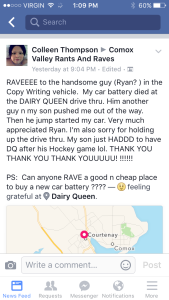People often compliment me on my writing. Sure, it’s mostly my wife and my mother-in-law, but still. The point is, great writing – however loosely you define that term – doesn’t flow from the keystrokes of enlightened scribes like so many lavender-scented rainbows from the backsides of flying unicorns.
Unlike unicorns, great writing isn’t magical; it’s actually quite ugly to watch. It’s type, delete, type type, delete, type, smash fist into keyboard, delete, type, sigh, go for more coffee. You can, however, ensure your writing is the best it can possibly be by following these six steps:
- Research – You can’t write what you don’t know. Before writing a single letter, find out as much as you can about your subject. Typically, the research phase makes up the majority of time our team spends on a copywriting project.
- Do nothing – Once you’ve researched the lavender rainbows out of your subject, let it sit. Go for a run. Play a fun game with your significant other. While you’re not thinking about what you plan on writing, your subconscious is organizing all that well researched information. Though it may feel like slacking, this is a vital part of the creative process.
- Write – Time to get those thoughts on paper. For longer pieces, it helps to have a rough outline in place. For shorter pieces, just start writing. Try not to get too caught up with grammar or pesky little word choices (is it toward, or towards?). Just let it flow.
- Edit – Now’s the time to go back over your draft and pick it apart. Nothing’s perfect the first time through. If you were to read some of my initial drafts, you’d wonder if I actually went to school, let alone get paid to write. Go through your draft on-screen at least twice, and as many times as your sanity will allow. Then print out a hard copy.
- Rest – Sleep on it. Don’t even THINK about picking up your draft again until the following day. When you approach your draft with fresh eyes, things that seemed perfectly reasonable at the time will suddenly sound ridiculous. Promise.
- Review – Read your printed draft aloud, which forces you to slow down and register every word. Reading aloud also helps you hear any awkward constructions that may trip up readers. (For example I initially wrote, “Reading aloud also allows . . .”) Now make your edits on the electronic document, and voilà – your masterpiece is ready for acclaim!
Ryan Parton is a professional copywriter and president of RP Copywriting. For a free consult, visit www.rpcopywriting.com or call 250.702.1103.




